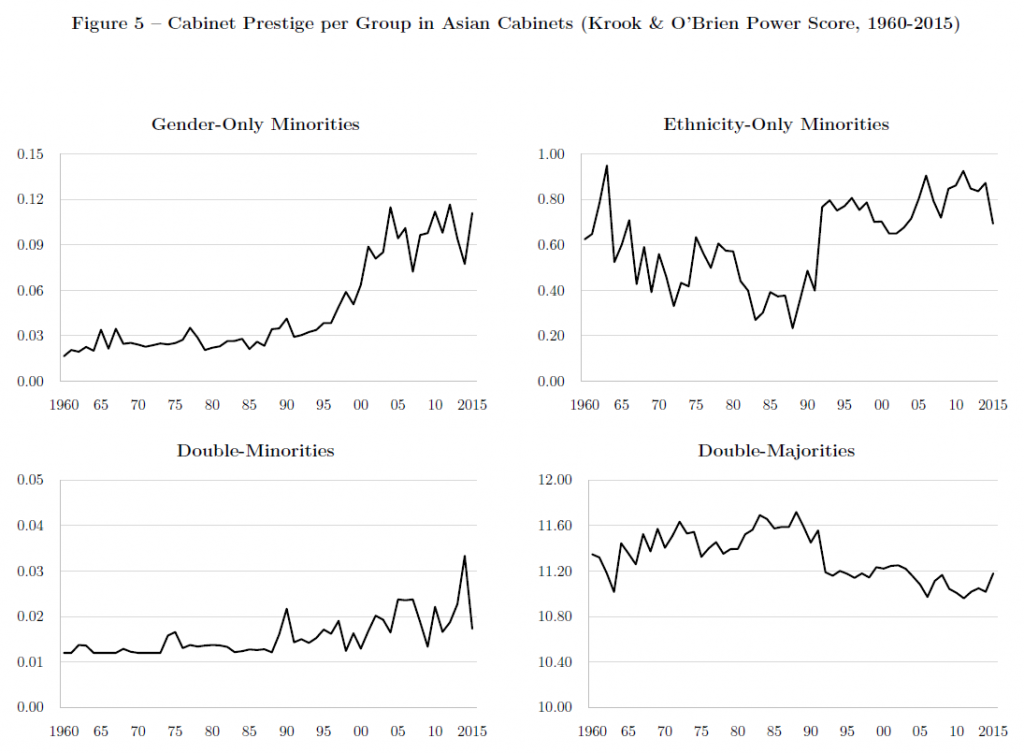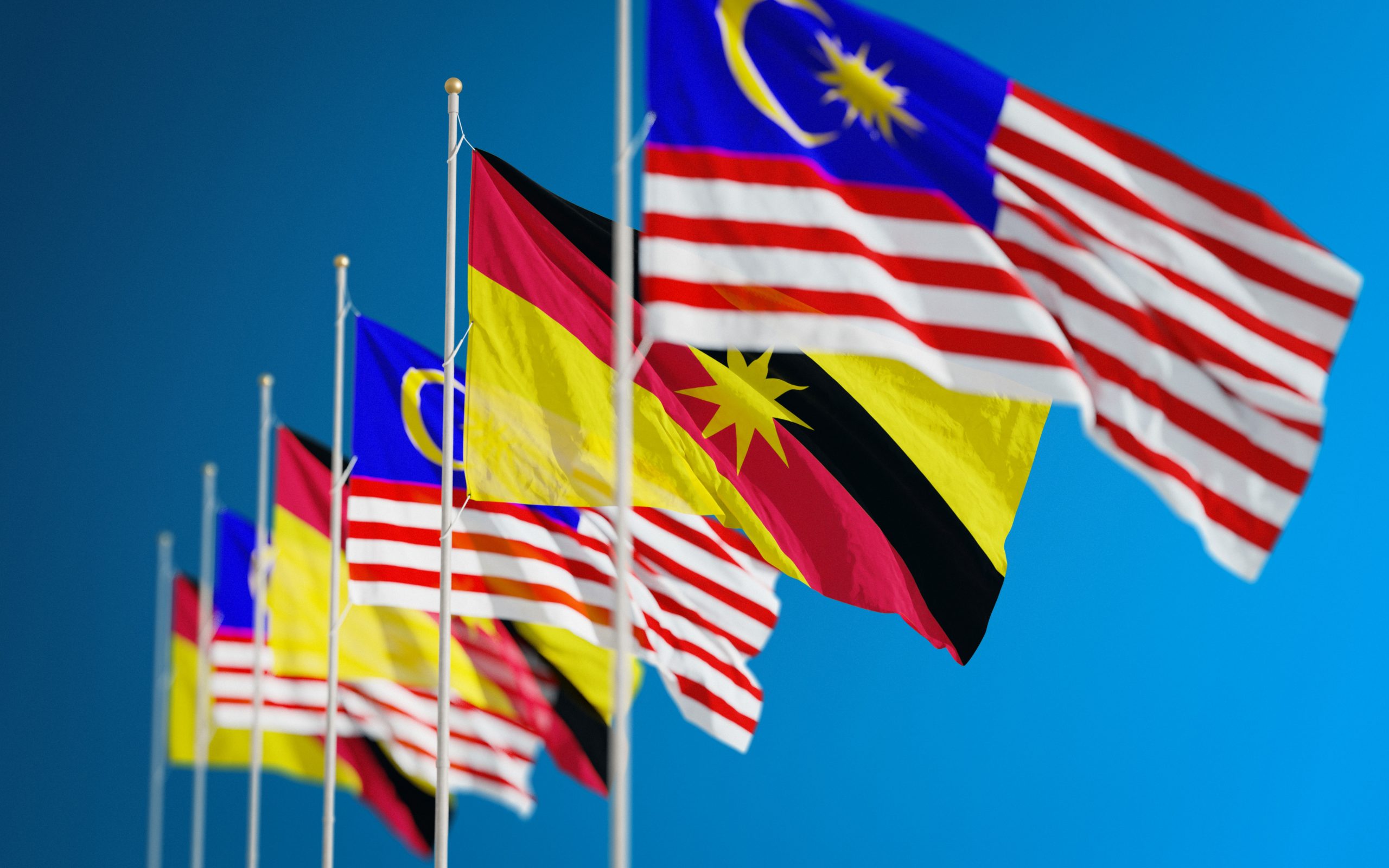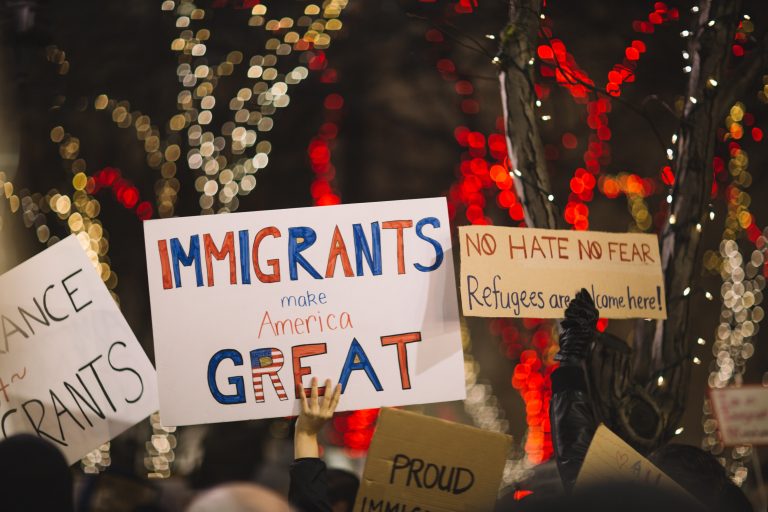Gender, Ethnicity, and Intersectionality in Government Cabinets: Evidence from Asia
What explains cabinet diversity – both gender and ethnicity? In contrast to the literature that (1) focuses singularly on one minority dimension – whether it is gender or ethnicity; or (2) assumes the two dimensions operate in a zero-sum game, we consider the intersection of the two. We argue we see more minority ministers – gender and/or ethnicity – when the chief executive must coopt a group beyond coethnic men. Initially, there is a tradeoff between gender and ethnicity.
However, beyond a certain threshold – i.e., when the hegemonic ethnic group is small and the political arena is sufficiently open – the multiple, competing needs on the two dimensions incentivizes the chief executive to coopt via the double-minority. We test our argument using original cabinet data from Asia (N=53) 1960-2015. We identify the gender and ethnicity of 60,000 country-year-minister observations using multiple coders, double checked against country expert surveys, and tripled verified using local crowdsourcing. We find evidence that multiethnic democracies not only have more double-minorities but that the prestige of their portfolios are also on average higher. This paper offers a way to study intersectionality in democratic representation and political institutions.

@prelabutexas Curious about cabinet diversity? Here’s a peek of Keith Chew and Amy Liu’s paper, “Gender, Ethnicity, and Intersectionality in Government Cabinets: Evidence from Asia.”#politicalscience #politics #fyp #representation








